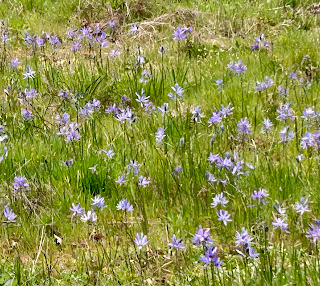These are on the Oak Springs property.
Across the barbwire fence.
This one is in line with the pool building.
It is finally opening on April 24.
More blossoms open April 29.
Another to the left of the one above, a little farther from the trail.
Tree at top of ridge just starting to open.
Can see pickleball court in the background.
Names: Saskatoon Serviceberry is a combination of two of its most familiar common names. It is also known as Juneberry, or Western Serviceberry. Historically it was also called “pigeon berry.” In some regions, serviceberry is pronounced “sarvis”-berry. Saskatoon comes from the Cree word for Serviceberry. The city of Saskatoon, Saskatchewan was named after the berry. The name “serviceberry” apparently comes from the similarity of the fruit to the related European Sorbus. The origin of the generic name Amelanchier is derived from the French name of the European species, Amelanchier ovalis. Alnifolia means “alder-like” leaves.
Growth: Saskatoon Serviceberry grows 3-15 ft. (1-5m) tall, sometimes taller. It is relatively short-lived; most will live about 20 years but some have survived to 85.























































